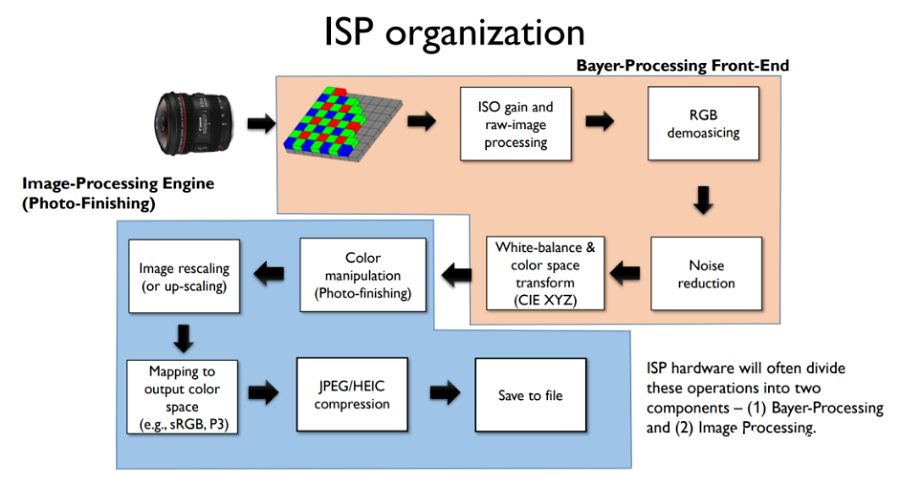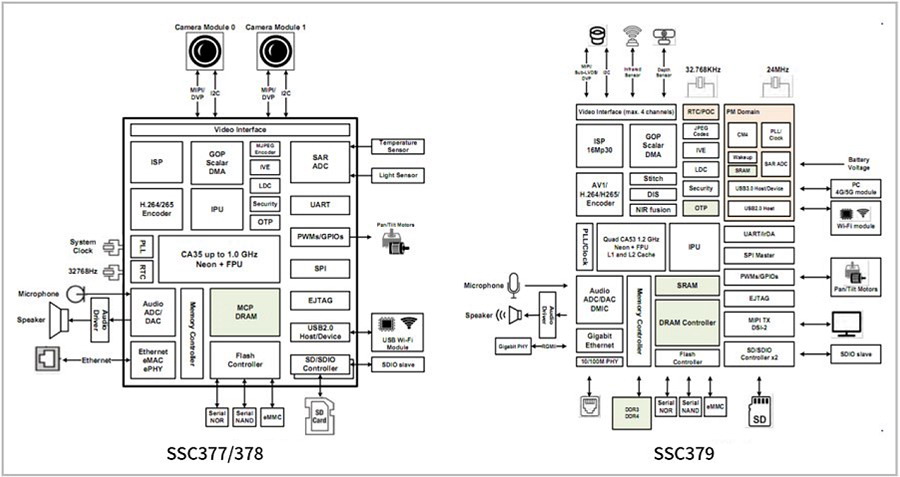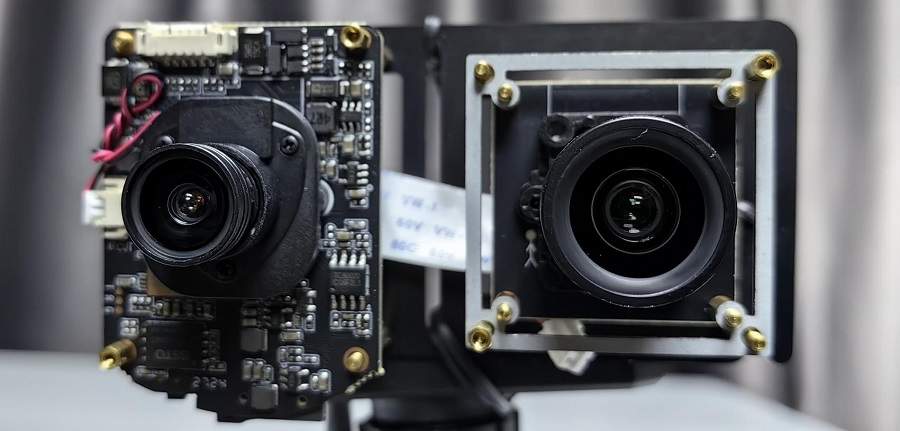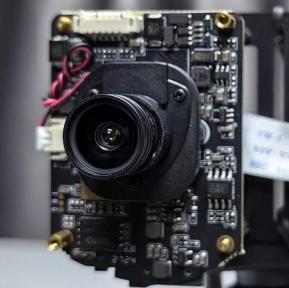I. Introduction to Low - Light Imaging Technology
The concept of low - light cameras first emerged in 1998. By 2019, the market had shown obvious diversification.
The security industry typically classifies front - end cameras into four grades:
(1) Ordinary cameras: Usually require an illuminance greater than 0.1 Lux.
(2) Moonlight - level low - light cameras: Have an illuminance range between 0.01 and 0.1 Lux.
(3) Starlight - level low - light cameras: Can reach an illuminance range of 0.001 to 0.01 Lux.
(4) Black - light - level low - light cameras: When the illuminance requirement is lower than 0.001 Lux, it reaches the so - called “super - starlight level”. The commonly referred to “black - light - level” cameras usually require maintaining a color image at an illuminance of 0.0005 Lux.
Improving the low - light performance of cameras generally starts from three aspects: ISP tuning, hardware/software optimization, and AI algorithm application.
1) ISP (Image Signal Processor): Its main function is to perform post - processing on the signals output by the front - end image sensor. The processing includes linear correction, noise removal, bad - pixel removal, interpolation, white balance, and automatic exposure control. Relying on ISP technology can achieve better on - site detail restoration under different optical conditions. ISP technology largely determines the imaging quality of the camera. Tuning the ISP parameters includes 3D noise reduction, color noise reduction, edge enhancement, wide dynamic range adjustment, gain adjustment, noise filtering, etc.


Figure 1: Schematic Diagram of ISP Image Optimization Process
2) Hardware/Software Optimization:
1. Large aperture: A larger aperture can increase the amount of incoming light. For example, the light - intake of an F1.0 large - aperture lens is four times that of an F2.0 lens.
2. High - quality lens: A high - quality lens is the foundation for high - quality imaging. Using optical glass lenses or glass - plastic hybrid lenses combined with anti - reflection coating technology, the light transmittance of the lens group can reach over 99%.
3. Large - size and high - sensitivity sensor: Large - format and stacked sensors can effectively improve the light - sensing ability. For example, the light - sensing ability of a 1/1.7 - inch stacked sensor is 500% higher than that of a 1/2.7 - inch ordinary sensor.
4. Infrared enhancement: Selecting sensors with near - infrared enhancement technology can capture brighter images.
5. Lowering video frame rate: By reducing the video frame rate and extending the exposure time of each frame, the amount of incoming light can be increased.
6. Image fusion: One sensor captures the brightness information and object outlines of the image, while the other captures color information. A fusion algorithm is used to combine the two sets of image information to output a better image.
3) AI ISP: It is the combination of AI technology and ISP, usually including 20 - 30 algorithms.
1. Color management: Using deep - learning models for more precise color management, it can more accurately adjust image colors according to the color - change rules in different scenarios and illuminance levels.
2. Color enhancement: By identifying key areas and details in the image, it can perform targeted color enhancement to improve the visual effect of the image.
3. Spectral reconstruction: It can restore richer spectral information from the input RGB image, which helps to improve the color accuracy and authenticity of the image.
4. Empowering key ISP pipeline modules: AI empowers the five key modules in the ISP pipeline, namely HDR, 3DNR, SR, RLTM, and Demosaic, especially improving the performance of the 3A, noise reduction, and HDR modules.
With the continuous improvement and optimization of low - light imaging technologies such as black - light technology, the market application side has gradually matured. At present, low - light imaging technology has begun to be applied in economy - class camera products. “Starlight - level” low - light cameras have changed from a concept to a standard product of various manufacturers, and more extreme low - light technologies such as black - light and aurora have become the focus of attention of manufacturers. From pursuing lower illuminance environments, to pursuing higher - quality images, and then to pursuing extreme clarity and color - restoration for AI - enabled intelligent recognition applications, the development of low - light cameras has been advancing vigorously. Next, we will introduce Sigmastar's low - light camera solution.
II. Sigmastar's Low - Light Full - Color Camera Solution
The SoC main - control chips of Sigmastar's low - light full - color camera solution are SSC377, SSC378, and SSC379. After software and hardware tuning, the SSC377/378 solutions can output “black - light - level” color images at a low illuminance of 0.0005 Lux. Among them, the SSC337 series supports 5M cameras, the SSC338 series supports 4K ultra - high - definition image resolution, and the SSC379 can support up to 16M cameras, with improved computing power and support for AI ISP functions.

Figure 2: Block Diagram of SSC377/378/379 Chips
The SSC377 uses an ARM Cortex - A35 processor with a working frequency of 1.0 GHz and has a built - in independent IPU unit with a computing power of 1 Tops. The chip integrates SigmaStar's industry - leading ISP, has two MIPI interfaces, supports a maximum of two - channel HDR input, supports H.264/H.265 encoding and decoding, and has a maximum image - processing capacity of 5M@30fps (2880 * 1620). The chip has a built - in Ethernet interface supporting 10/100M, and its rich interfaces can meet diverse connection requirements.
This solution is paired with a 1/1.8 - inch stacked high - sensitivity image sensor and uses near - infrared (NIR) enhancement technology to improve the quantum efficiency (QE) at wavelengths of 700 - 1050 nm, enabling it to capture brighter images at a greater distance. The supporting high - light - transmittance lens uses an F1.0 large aperture to ensure sufficient light flux.


Figure 3: Main Specifications of SSC377/378/379 Chips
The low - light camera solutions using the SSC377 and SSC378 chips can achieve color - image restoration under “black - light - level” low - light conditions through hardware and ISP parameter optimization. Therefore, the solutions have low costs and high cost - effectiveness. If the SSC379 solution with AI ISP support is used, the imaging performance under low - light conditions can be improved by about 30%. It is an upgraded version of SSC377/378 in terms of performance and is suitable for applications with higher requirements.
The low - light imaging test results of the test platform built with the SSC377 solution demo board show that it has good low - light detail imaging performance. In actual tests, it can still maintain color - imaging ability at an illuminance of 0.0005 Lux.


Figure 4: Demo Board of “Black - Light - Level” Low - Light Camera Solution
The low - light camera solutions using SSC377/378 can provide clear and stable images both during the day and at night. Moreover, the solutions support dual - camera configuration, which can meet the requirements of both key - area monitoring and omni - directional monitoring, and can satisfy diverse application scenarios.
According to foreign statistics, over 95% of illegal cases occur at night. Authoritative data from the Ministry of Public Security shows that nearly 70% of crimes occur at night, especially from 7 p.m. to 5 a.m. the next day, which is the peak period for criminal incidents. Therefore, in the security field, night - time monitoring is more important than daytime monitoring. Using cameras with full - color night - vision imaging for 24 - hour day - and - night monitoring has become a new rigid demand, and the market growth prospects are promising.
For more information on the low - light full - color camera solution, including reference designs, chip data, and technical specifications, please contact the mall customer service.









